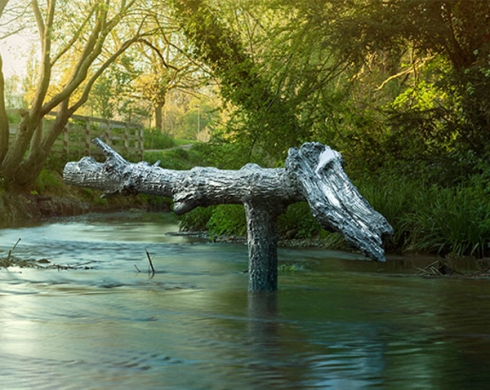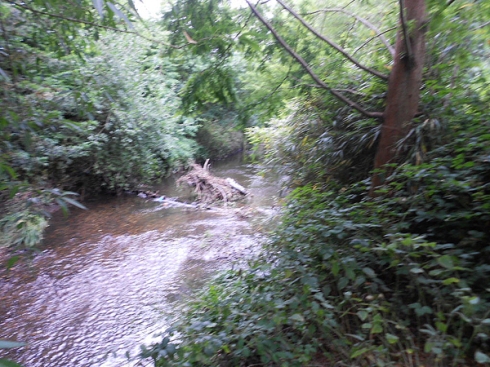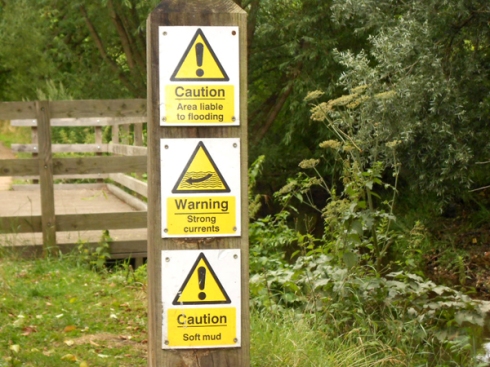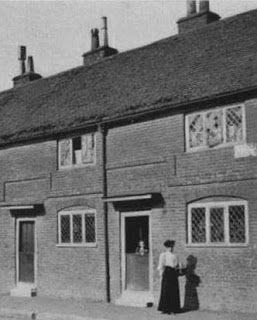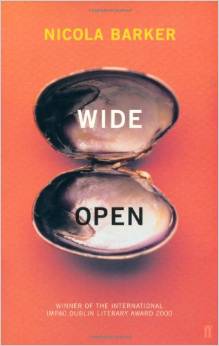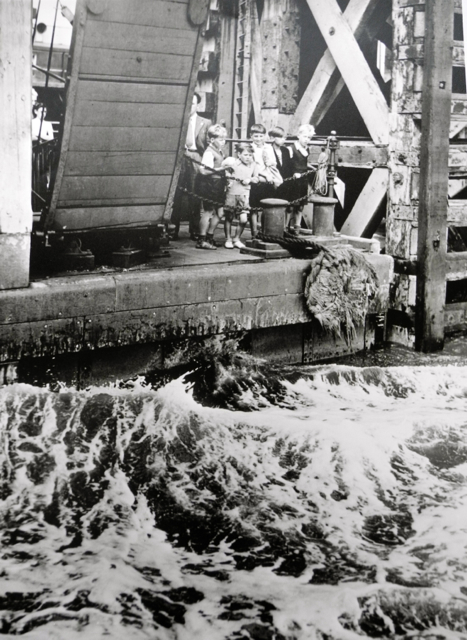Guest Post by BK
Public Sculpture, both good and bad, has been all the rage lately, and I am pleased to report that Catford now has its own installation, although it does not seem to be wearing well.
I first came across The Turning Tree in May when I was walking my dog through Ladywell Fields and noticed a large log that seemed to be blocking the River Ravensbourne, I assumed that it had been put there by some enterprising children. About a week later we were walking through the park again when we came across a group of people standing around a gazebo and drinking warm white wine; this turned out to be the launch party for The Turning Tree, a new sculpture by Henry Krotatsis.
I must confess that The Secret Garden Festival which ran in Lewisham in 2014 was so secret that it passed me by, but it involved various artistic activities around the borough’s main rivers, the Quaggy, Pool and Ravensbourne. The Turning Tree was commissioned as a permanent reminder of the Festival. The sculpture is an exact replica of a large piece of a black cedar tree that Mr Krotatsis found in the park, cast in shiny aluminium, it is mounted horizontally on another cast stump in the middle of the Ravensbourne. According to the project organisers:
This poetic sculpture creates a reticent monument to nature, in contrast to the vainglorious human statues that usally adorn public spaces. Using a section of fallen Black Poplar tree taken from the park, Krokatsis will cast a section of the trunk in polished aluminium. Lying horizontally and raised above the water surface, the sculpture will appear to levitate within the River Ravensbourne. A hidden bearing will allow the whole trunk to gently turn, manipulated by the wind or a change in current.
Children are also invited to bring along there wellies and play on the log as it turns.
Unfortunately, the log does not seem to have generated a great deal of interest. There is no signage anywhere to indicate its presence, (probably still part of The Secret Garden). In May and June a pathway was trampled through the vegetation and down the riverbank at the point next to the statue; but this seems to be so little used that the path has reverted back to brambles and can no longer be accessed. The only was to view the log is from the piece of lowered pathway which is about 10 metres away at the nearest point, the view getting more restricted over the seasons as the vegetation develops. It is possible to access the statue from here if you want to try to swing on it, but you need to scramble down the river bank and along the river. The sign saying ‘Caution. Soft Mud!’ is not inviting.
The statue’s biggest problem stems from the nature of the Ravensbourne river system, the thing it is supposed to celebrate. Although the walks along the riverbank in Ladywell Fields and in the Pool Linear Park are very pleasant and almost rural, where you can spot kingfishers, herons and egrets, the main function of the rivers is to act as a storm drain for the heavily urbanised area from Catford to Bromley. All the rain that falls on hard ground in Beckenham, Bellingham and Downham will have to pass by our statue on its way to The Thames. This means that in times of heavy rain such as we had last weekend the volume of water in the river, and so its speed and height, will suddenly increase alarmingly. As the water sweeps down it also carries along vegetation, broken branches, old plastic bottles and carrier bags (Sainsbury’s at Sydenham is a particularly good source of these). All this stuff is then dumped at the nearest handy obstacle.
The rocks at the back of Lewisham Hospital used to form a convenient dumping ground, but now that somebody has placed a barrier in the middle of the river flow in Ladywell Fields then a lot of the detritus gets dropped of there. When I walked past on Monday after the weekend’s bad weather it was just about possible to make out the end of the statue, but the rest of it had been buried under a large pile of old branches.
So, we have a public sculpture that is designed to be viewed in ever-changing reflected light that it is very difficult to actually even see; that is meant for children to swing on but can only be accessed through mud; and that is supposed to gently turn in the current, but has placed in a stream that can turn into a torrent and is currently buried in river rubbish.
Barrett are proposing an 18-storey tower block between the Catford stations. As a sweetener they have included a Public Piazza which will replace the present concrete culverts with an attractive water feature. If this goes ahead then maybe the river will be cleaned up. Until then it would be interesting to know who will be maintaining our new public sculpture.

